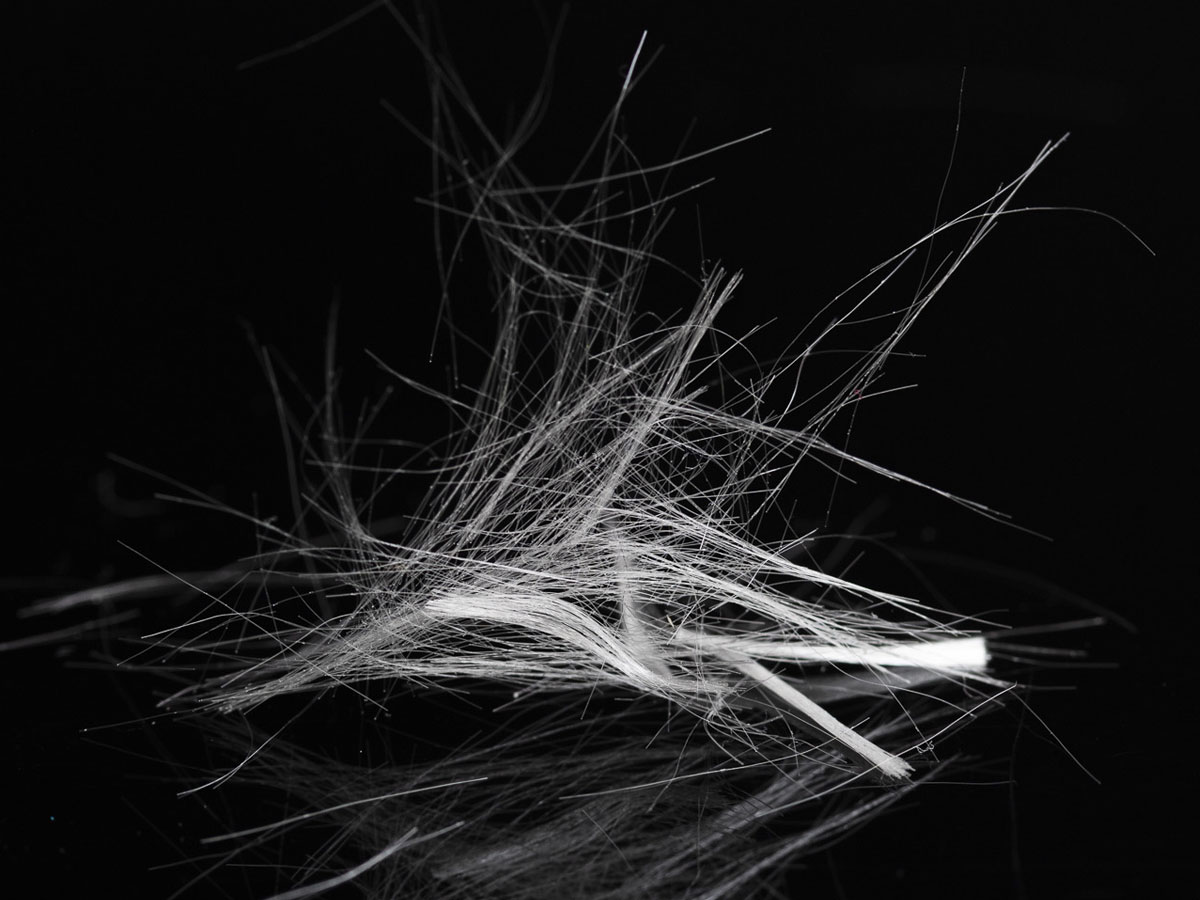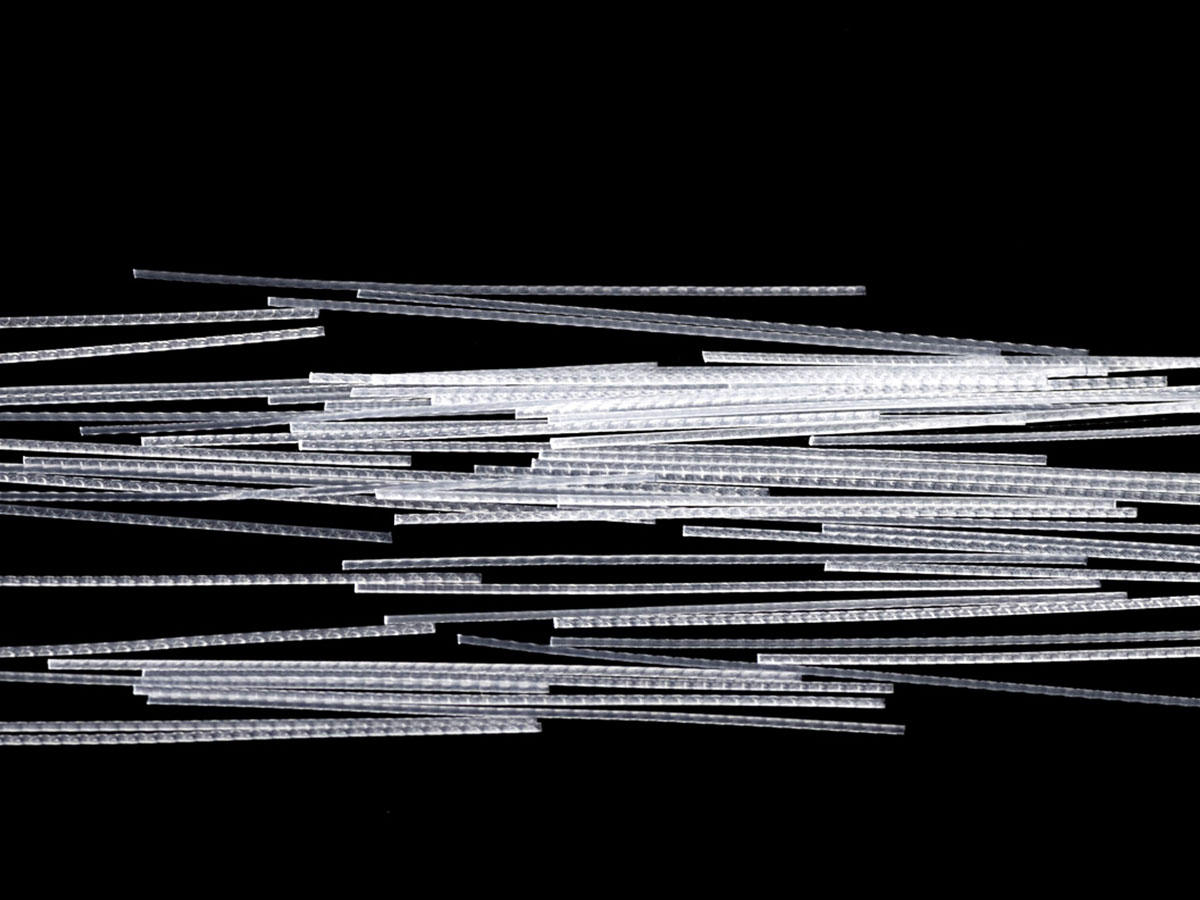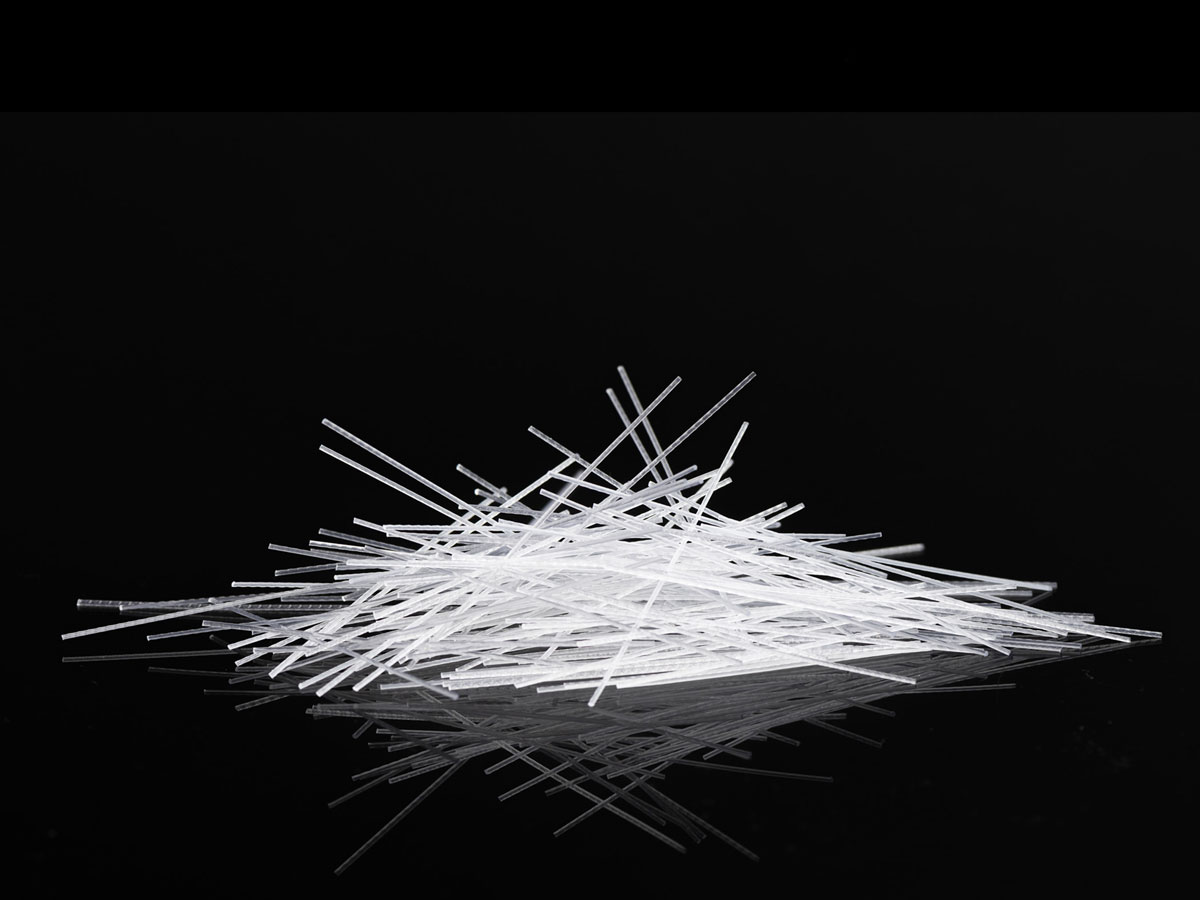Innovative, sustainable, cost-effective – there are many reasons for choosing ENNEAFIL – the high-performance fibre of the future, which is characterised by its outstanding mechanical properties and a wide range of applications in concrete processing.
Concrete is the world’s most widely used building material of our time. It is mixed or reinforced with other materials, among other things because of its low tensile strength. In addition to materials such as glass, carbon or basalt fibres and polypropylene, steel is most commonly used to protect the concrete from damage and to ensure safe statics.
The most important prerequisite for the development of ENNEAFIL was the convincing material properties, especially compared to the market leader steel, especially because the susceptibility of this material to corrosion promotes cracking in concrete, allows moisture to enter and can damage it. Its iron content can also make it an undesirable conductor of electricity and heat. In addition, its production is associated with high energy costs, just as with cost-intensive glass and basalt fibres.
From idea to product
Our objective was to produce a sustainable plastic fibre that exceeds traditional products in terms of material properties, but also in terms of costs and sustainability. In many years of research and development together with the Institute for Building Research at RWTH Aachen (ibac), we found the ideal solution with ENNEAFIL.
ENNEAFIL is made of 100% pure polyamide. The plastic has the property of being corrosion-free, alkali-resistant and flexible, as well as withstanding thermal differences and having better thermal insulation properties compared to steel reinforcement. Because ENNEAFIL does not conduct electricity like steel, it is ideally suited for use with rapid e‑mobility charging stations, such as for the bases of the charging stations. In addition, it has higher mechanical strength values compared to other polymers.
The microfibres have hydrophilic properties. They absorb moisture, which is released again during the drying and hardening phase of the concrete. This leads to a significant reduction in the formation or expansion of cracks, as well as a reduction in shrinkage and, in part, in the need to replace or reduce steel reinforcements.
Its good mechanical and static properties are achieved by the n‑dimensional alignment of the macrofibres, which integrate perfectly into the concrete matrix due to the special surface structure.

Less material, cost and time — Taking big steps towards a small ecological footprint
Our contribution to a small ecological footprint already begins in production. While the production of steel, glass or basalt fibres requires a lot of energy and usually generates high CO2 emissions, ENNEAFIL is produced with sustainable energy sources.
When using ENNEAFIL, the plastic fibre is characterised by the fact that lightweight concrete with ENNEAFIL has better thermal insulation properties than with steel. This leads to an increase in energy efficiency through better insulation and thus to a reduction in heating and cooling requirements. In addition, the use of ENNEAFIL in road construction extends the service life of roads and highways and reduces the cost of maintenance due to the longer repair intervals. If they have to be dismantled, the corrosion-free elements can simply be reused.sfreien Elemente problemlos wiederverwendbar.
Another factor that speaks in favour of the already cost-effective ENNEAFIL is the additional savings potential during the construction phase. Steel-reinforced concrete requires a protective layer due to the risk of corrosion. This is not the case with ENNEAFIL. This not only generates savings in material costs, but also in construction times, and allows architects more freedom in the design of concrete elements.

Building together for the future

